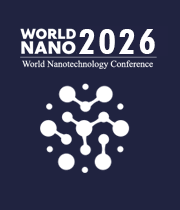Supramolecules
A supramolecule is a type of molecule that is composed of smaller subunits called building blocks. These building blocks can be atoms, small molecules, or other supramolecules, joined together in a specific order to form a larger structure. The properties of the individual building blocks are retained upon assembly, and the resulting supramolecule may exhibit properties that are not found in the individual components. Supramolecules are usually held together by weak, non-covalent interactions, such as hydrogen bonding or van der Waals forces. Supramolecular chemistry is the study of the behavior of supramolecules and the interactions between them. This field of chemistry is relatively new and is growing rapidly. It is particularly applicable to the design and synthesis of complex molecular architectures and systems with properties not found in the individual building blocks. For example, supramolecules can be used to create nanoscale structures with specific shapes, sizes, and functions. Supramolecules are used for a variety of applications, including drug delivery, catalysis, sensing, and materials science. In drug delivery, supramolecules can be used to create nanoscale carriers that can transport drugs to specific sites in the body, resulting in greater efficacy and lower toxicity. In catalysis, supramolecules can be used to create catalytic systems that can increase the efficiency of chemical reactions. In sensing, supramolecules can be used to detect various molecules in the environment and in biological systems.

Harry Ruda
University of Toronto, Canada
Raman Singh
Monash University, Australia
Paulo Cesar De Morais
Catholic University of Brasilia, Brazil
Xiao Hong Nancy Xu
Old Dominion University, United States
S V A R Sastry
Harcourt Butler Technical University, India
Vinayak Adimule
Angadi Institute of Technology and Management, India



Title : 40,000 implants in humans and no failure: The impact of nanomedicine
Thomas J Webster, Hebei University of Technology, China
Title : Cellulose-derived biochar modified with iron oxide and ZnO nanoparticles by a novel one-step pyrolytic method for removal of emerging contaminants from water
Rashad Al Gaashani, Hamad Bin Khalifa University, Qatar
Title : Harnessing the unique properties of engineered nanostructures for sensing
Harry Ruda, University of Toronto, Canada
Title : Circumventing challenges in developing CVD graphene on steels for extraordinary and durable corrosion resistance
Raman Singh, Monash University, Australia
Title : Nano DAP augments productivity, phosphorus use efficiency, and profitability of spring wheat in India
Binaya Kumar Parida, Coromandel International Ltd, India
Title : Lipid nanoparticles formulations: From bench scale to industrial scale
Mohammad A Obeid, RAK Medical and Health Sciences University, United Arab Emirates